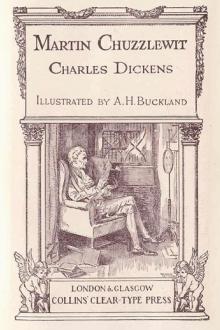Narrative of the Voyage of H.M.S. Rattlesnake, Commanded By the Late Captain Owe - Volume 1, John MacGillivray [read dune txt] 📗

- Author: John MacGillivray
Book online «Narrative of the Voyage of H.M.S. Rattlesnake, Commanded By the Late Captain Owe - Volume 1, John MacGillivray [read dune txt] 📗». Author John MacGillivray
Natural History volume 7 second series page 82 plate 8 figure 1.)
The latter, however, is very much smaller, the cells narrower in proportion to their length, and the margin of the opening minutely verrucose. The cell has more than one posterior perforation; and the central cell at a bifurcation is rounded above and without a spinous process; lastly, the ovicell is much loftier and tesselated on the surface.
11. SCRUPOCELLARIA, Van Beneden.
Character (modified). Cells rhomboidal, with a sinuous depression on the outer and posterior aspect. Each furnished with a sessile avicularium at the upper and outer angle in front, and with a vibraculum placed in the sinus on the outer and lower part of the cell behind. Opening oval, or subrotund, spinous above. Ovicells galeriform.
This natural genus is characterised more particularly by the presence upon EACH cell of a sessile avicularium seated on, or in fact forming the upper and outer angle, and of a vibraculum placed on the back of the cell. The cells in some species are provided with a pedunculate operculum, by which it is intended to designate a process, which arising by a short tube from the anterior wall of the cell, immediately beyond the inner margin of the opening, projects forwards and bends over the front of the cell, expanding into a variously-formed limb, and serving as protection to the mouth of the cell in front. The cavity of the tube by which the process arises, becomes, in the expanded portion, continuous with variously disposed grooves or channels, which terminate at the edges of the operculum. This organ affords excellent specific characters (not in this genus alone). Besides the sessile avicularia above noticed, many species of this genus also possess avicularia of another kind, and which are placed on the front of the cell below the opening and towards the inner side, or in other words, towards the middle line of the branch. In this genus, in all those species in which the second avicularium occurs, each individual cell is provided with one. This additional avicularium appears to be composed of a flexible material, and it is very easily broken off, so that in many instances, perhaps throughout an entire specimen the organ itself may be wanting, although its position is clearly evidenced by the existence of a rounded opening in the usual situation of the organ. It is necessary to distinguish this form of flexible (if such it be) avicularium from the truly articulated and movable avicularia, in the form of birds' heads, and which form does not occur in the genus Scrupocellaria.
a. OPERCULATAE. Cells furnished with a pedunculate operculum.
1. S. cervicornis, n. sp.
Veins or channels in the oral operculum, branching so as to resemble the antlers of a stag. The marginal spine next above the pedunculated operculum, bifurcate.
Habitat: Off Cumberland Islands, 25 fathoms, fine grey mud.
A small, delicate, parasitic species, very transparent. The very peculiar markings on the operculum at once distinguish it. The upper margin of the mouth is furnished with five elongated spines, the innermost of which is forked at the extremity.
2. S. diadema, n. sp.
Cells elongate, external side nearly straight, vibraculum sublateral, very prominent. Limit of operculum entire, or obscurely bi-trilobed. A flexible avicularium in front. Ovicell usually with a single row of four or five openings immediately above its mouth.
Habitat: Moreton Bay.
b. INOPERCULATAE. Cells without a pedunculate operculum.
3. S. cyclostoma, n. sp.
Opening of cell nearly or quite circular, margin much thickened, with three or four short indistinct spines above. Vibraculum sublateral. A flexible avicularium in front. Ovicells -- ?
Habitat: Bass Strait, 45 fathoms.
4. S. ferox, n. sp.
Opening of cell broad oval, pointed below; three short indistinct spines above; vibraculum large, sinus deep. An enormous anterior avicularium, as wide as the cell. Ovicell lofty, with numerous punctures over the surface.
Habitat: Louisiade Archipelago. Bass Strait.
Distinguished from the former species by the enormous anterior avicularium, and the form of the opening. Another peculiarity of this species is the curious serrated appearance of the radical tubes.
12. CANDA, Lamouroux.
Character: (B.) cells rhomboidal, sinuated on the outer side for the lodgment of a vibraculum. No sessile avicularium on the upper and outer angle in front. An uncertain number of flexible avicularia, arranged along the middle of the branches, and in much less number than the cells.
This genus is at once distinguished from Scrupocellaria, to which it is otherwise closely allied, by the absence of the sessile avicularium on the upper and outer angle in front, and also by the circumstance, that although there are flexible anterior avicularia, they do not correspond in number with the cells, but seem to be disposed in a special tract along the middle of the branch or internode. The connection of the branches by transverse tubular fibres is not a character of either generic or specific importance, though it is more striking in the only species hitherto known as belonging to this genus, than in any other. These transverse tubular fibres are, like the radical fibres in Scrupocellaria, always inserted, not into the body of a cell, but into a vibraculum. They are evidently of the nature of a byssus.
1. C. arachnoides, Lamouroux.
Cells biserial; opening oval, truncated above, and the upper margin recedent, with a spine on each side, the outer the longer surface of cell covered with transparent granulations.
Habitat: Bass Strait, 45 fathoms.
b. Internodes composed of 2 to 4 cells.
13. EMMA, Gray. Dieffenbach's New Zealand, Volume 2 page 293.
Character. (B.) Cells in pairs or triplets. Opening more or less oblique, subtriangular, partially filled up by a granulated calcareous expansion. A sessile avicularium (not always present) on the outer side, below the level of the opening.
This genus appears to be a natural one, though very closely allied to Tricellaria (Fleming). The more important points of distinction consist in the conformation of the opening of the cell, and in the position of the avicularium when the latter organ is present. The lower half of what would otherwise be the oral opening of the cell is filled up by a thin plate of calcareous matter, granulated on the surface, and by which the actual opening is rendered more or less subtriangular, the mouth being placed just below the apex of the triangle. The margin of the opening is considerably raised, especially at the oval end, so that the opening appears to be situated in a deep depression. This character of opening, however, occurs also in a triserial species of Cellularia from Algoa Bay. The position of the avicularium entirely BELOW the level of the opening on the outer side of the cell, is the peculiar characteristic of Emma as distinguished from Tricellaria, in which that organ when present is placed on the upper and outer angle as in Cellularia proper, and Scrupocellaria. It is worthy of notice that avicularia may be present on every cell in some specimens, and most usually, whilst in others of equal size there will be none at all apparent. So that the position of these organs in this genus, as well as in Tricellaria, is of more importance systematically than even their existence.
1. E. crystallina, Gray, l.c.
Cells in pairs; three spines on the outer edge, the central usually the longest and strongest.
Habitat: Bass Strait, 45 fathoms.
Parasitic upon Polyzoa, etc. circinate branched-branches irregular divaricate. The opening of the cell triangular, very obliquely placed.
2. Emma tricellata, n. sp.
Cells in triplets; three or four long spines on the upper and outer part; a small spine on the inner and lower part of the edge of the opening.
Habitat: Bass Strait.
Parasitic upon Catenicella, etc. Habit long straggling, very like the preceding species. The cells are more infundibuliform, and the avicularium, which, as in E. crystallina is not always present, is larger, but occupies the same position on the cell.
2. Polyzoary continuous throughout.
Fam. 3. BICELLARIADAE. Frond wholly divided into narrow ligulate, dichotomous, bi or multiserial branches; no vibracula. Avicularia when present pedunculate.
14. BICELLARIA, Blainville.
Character. (B.) Cells turbinate, distant. Opening directed more or less upwards. Mouth submarginal. Several curved spines, marginal or submarginal.
1. B. tuba, n. sp.
Opening round, looking nearly directly upwards; a digitiform hollow process below the outer border supporting 2 to 4 long incurved spines; 2 to 3 other long curved submarginal spines behind or above the opening, none below it in front-a solitary spine on the back a short way down the cell. Avicularia very long, trumpet-shaped, arising on the back of the cell.
Habitat: Bass Strait, 45 fathoms.
This species is at once recognisable by the remarkable form and unusual position of the avicularium, and also by the peculiar digitiform spiniferous process on the outer side of the opening.
2. B. gracilis, n. sp.
Cells elongated, slender, opening round or suboval, looking obliquely forwards and upwards; three marginal (sometimes slightly submarginal) spines above and behind the opening, and two much longer curved hair-like spines arising from the anterior and lower edge of the opening. Ovicells globose, subpedunculate, attached to the upper and inner part of the margin of the opening. Avicularia small, like birds' heads.
Habitat: Bass Strait.
A delicate slender species, not unlike B. ciliata or avicularis in habit. The two long spines arising from the anterior edge of the opening suffice to distinguish it from the former of these two species.
3. B. grandis, n. sp.
Cells much elongated outwards, horizontal or projecting portion oblong, rounded at the extremity; 2 to 5 long curved submarginal spines, externally a single dorsal spine about halfway down the cell; opening oval, narrower outwards; very oblique mouth at the outer end. Avicularia -- ?
Habitat: Bass Strait, 45 fathoms.
Quite distinct from B. ciliata not only in its size, which is nearly three times as great, but in the form of the cell and the opening. The number of spines varies very much, and two or three of them, not unfrequently, arise from a common projecting process or base.
4. B. johnstoniae.
Cells obliquely truncated above with a short spine on the outer angle; opening large, suboval, with an obtuse angle outwardly; margin slightly thickened, wholly unarmed.
Habitat: Off Cumberland Islands, 27 fathoms, fine grey mud.
Of a light grey colour: grows in large loose tufts, composed of long forked ascending branches. It is a very peculiar species, and some difficulty has been found in finding it a place. In the opening of the mouth, and the external short spine, it is a Cellaria; and in the colour and want of distinct articulation, it approaches Acamarchis; whilst in the form of the cell, and their mode of mutual connection, it is a Bicellaria: it differs from all other species of that genus, however, in the absence of any long spines, and in general habit. Were it not referred to that genus, it would probably constitute the type of a distinct one. A curious little trident-like organ is visible in the narrow part of some cells.
15. ACAMARCHIS, Lamouroux.
Character. (B.) Cells elliptical,* closely contiguous; opening very large, margin simple, not thickened. Avicularia not always present, like birds' heads.
(*Footnote. Viewed posteriorly.)
To which may be added, that the species are frequently coloured, red or bluish.
1. A. neritina, Lamouroux.
Habitat: Rio de Janeiro. Broken Bay, New South Wales.
This species appears to be one of the most generally distributed of the Polyzoa; it occurs in nearly every latitude in both hemispheres.
2. A. tridentata. Krauss. Corall. d. Sudsee page 3 figure 2.
The latter, however, is very much smaller, the cells narrower in proportion to their length, and the margin of the opening minutely verrucose. The cell has more than one posterior perforation; and the central cell at a bifurcation is rounded above and without a spinous process; lastly, the ovicell is much loftier and tesselated on the surface.
11. SCRUPOCELLARIA, Van Beneden.
Character (modified). Cells rhomboidal, with a sinuous depression on the outer and posterior aspect. Each furnished with a sessile avicularium at the upper and outer angle in front, and with a vibraculum placed in the sinus on the outer and lower part of the cell behind. Opening oval, or subrotund, spinous above. Ovicells galeriform.
This natural genus is characterised more particularly by the presence upon EACH cell of a sessile avicularium seated on, or in fact forming the upper and outer angle, and of a vibraculum placed on the back of the cell. The cells in some species are provided with a pedunculate operculum, by which it is intended to designate a process, which arising by a short tube from the anterior wall of the cell, immediately beyond the inner margin of the opening, projects forwards and bends over the front of the cell, expanding into a variously-formed limb, and serving as protection to the mouth of the cell in front. The cavity of the tube by which the process arises, becomes, in the expanded portion, continuous with variously disposed grooves or channels, which terminate at the edges of the operculum. This organ affords excellent specific characters (not in this genus alone). Besides the sessile avicularia above noticed, many species of this genus also possess avicularia of another kind, and which are placed on the front of the cell below the opening and towards the inner side, or in other words, towards the middle line of the branch. In this genus, in all those species in which the second avicularium occurs, each individual cell is provided with one. This additional avicularium appears to be composed of a flexible material, and it is very easily broken off, so that in many instances, perhaps throughout an entire specimen the organ itself may be wanting, although its position is clearly evidenced by the existence of a rounded opening in the usual situation of the organ. It is necessary to distinguish this form of flexible (if such it be) avicularium from the truly articulated and movable avicularia, in the form of birds' heads, and which form does not occur in the genus Scrupocellaria.
a. OPERCULATAE. Cells furnished with a pedunculate operculum.
1. S. cervicornis, n. sp.
Veins or channels in the oral operculum, branching so as to resemble the antlers of a stag. The marginal spine next above the pedunculated operculum, bifurcate.
Habitat: Off Cumberland Islands, 25 fathoms, fine grey mud.
A small, delicate, parasitic species, very transparent. The very peculiar markings on the operculum at once distinguish it. The upper margin of the mouth is furnished with five elongated spines, the innermost of which is forked at the extremity.
2. S. diadema, n. sp.
Cells elongate, external side nearly straight, vibraculum sublateral, very prominent. Limit of operculum entire, or obscurely bi-trilobed. A flexible avicularium in front. Ovicell usually with a single row of four or five openings immediately above its mouth.
Habitat: Moreton Bay.
b. INOPERCULATAE. Cells without a pedunculate operculum.
3. S. cyclostoma, n. sp.
Opening of cell nearly or quite circular, margin much thickened, with three or four short indistinct spines above. Vibraculum sublateral. A flexible avicularium in front. Ovicells -- ?
Habitat: Bass Strait, 45 fathoms.
4. S. ferox, n. sp.
Opening of cell broad oval, pointed below; three short indistinct spines above; vibraculum large, sinus deep. An enormous anterior avicularium, as wide as the cell. Ovicell lofty, with numerous punctures over the surface.
Habitat: Louisiade Archipelago. Bass Strait.
Distinguished from the former species by the enormous anterior avicularium, and the form of the opening. Another peculiarity of this species is the curious serrated appearance of the radical tubes.
12. CANDA, Lamouroux.
Character: (B.) cells rhomboidal, sinuated on the outer side for the lodgment of a vibraculum. No sessile avicularium on the upper and outer angle in front. An uncertain number of flexible avicularia, arranged along the middle of the branches, and in much less number than the cells.
This genus is at once distinguished from Scrupocellaria, to which it is otherwise closely allied, by the absence of the sessile avicularium on the upper and outer angle in front, and also by the circumstance, that although there are flexible anterior avicularia, they do not correspond in number with the cells, but seem to be disposed in a special tract along the middle of the branch or internode. The connection of the branches by transverse tubular fibres is not a character of either generic or specific importance, though it is more striking in the only species hitherto known as belonging to this genus, than in any other. These transverse tubular fibres are, like the radical fibres in Scrupocellaria, always inserted, not into the body of a cell, but into a vibraculum. They are evidently of the nature of a byssus.
1. C. arachnoides, Lamouroux.
Cells biserial; opening oval, truncated above, and the upper margin recedent, with a spine on each side, the outer the longer surface of cell covered with transparent granulations.
Habitat: Bass Strait, 45 fathoms.
b. Internodes composed of 2 to 4 cells.
13. EMMA, Gray. Dieffenbach's New Zealand, Volume 2 page 293.
Character. (B.) Cells in pairs or triplets. Opening more or less oblique, subtriangular, partially filled up by a granulated calcareous expansion. A sessile avicularium (not always present) on the outer side, below the level of the opening.
This genus appears to be a natural one, though very closely allied to Tricellaria (Fleming). The more important points of distinction consist in the conformation of the opening of the cell, and in the position of the avicularium when the latter organ is present. The lower half of what would otherwise be the oral opening of the cell is filled up by a thin plate of calcareous matter, granulated on the surface, and by which the actual opening is rendered more or less subtriangular, the mouth being placed just below the apex of the triangle. The margin of the opening is considerably raised, especially at the oval end, so that the opening appears to be situated in a deep depression. This character of opening, however, occurs also in a triserial species of Cellularia from Algoa Bay. The position of the avicularium entirely BELOW the level of the opening on the outer side of the cell, is the peculiar characteristic of Emma as distinguished from Tricellaria, in which that organ when present is placed on the upper and outer angle as in Cellularia proper, and Scrupocellaria. It is worthy of notice that avicularia may be present on every cell in some specimens, and most usually, whilst in others of equal size there will be none at all apparent. So that the position of these organs in this genus, as well as in Tricellaria, is of more importance systematically than even their existence.
1. E. crystallina, Gray, l.c.
Cells in pairs; three spines on the outer edge, the central usually the longest and strongest.
Habitat: Bass Strait, 45 fathoms.
Parasitic upon Polyzoa, etc. circinate branched-branches irregular divaricate. The opening of the cell triangular, very obliquely placed.
2. Emma tricellata, n. sp.
Cells in triplets; three or four long spines on the upper and outer part; a small spine on the inner and lower part of the edge of the opening.
Habitat: Bass Strait.
Parasitic upon Catenicella, etc. Habit long straggling, very like the preceding species. The cells are more infundibuliform, and the avicularium, which, as in E. crystallina is not always present, is larger, but occupies the same position on the cell.
2. Polyzoary continuous throughout.
Fam. 3. BICELLARIADAE. Frond wholly divided into narrow ligulate, dichotomous, bi or multiserial branches; no vibracula. Avicularia when present pedunculate.
14. BICELLARIA, Blainville.
Character. (B.) Cells turbinate, distant. Opening directed more or less upwards. Mouth submarginal. Several curved spines, marginal or submarginal.
1. B. tuba, n. sp.
Opening round, looking nearly directly upwards; a digitiform hollow process below the outer border supporting 2 to 4 long incurved spines; 2 to 3 other long curved submarginal spines behind or above the opening, none below it in front-a solitary spine on the back a short way down the cell. Avicularia very long, trumpet-shaped, arising on the back of the cell.
Habitat: Bass Strait, 45 fathoms.
This species is at once recognisable by the remarkable form and unusual position of the avicularium, and also by the peculiar digitiform spiniferous process on the outer side of the opening.
2. B. gracilis, n. sp.
Cells elongated, slender, opening round or suboval, looking obliquely forwards and upwards; three marginal (sometimes slightly submarginal) spines above and behind the opening, and two much longer curved hair-like spines arising from the anterior and lower edge of the opening. Ovicells globose, subpedunculate, attached to the upper and inner part of the margin of the opening. Avicularia small, like birds' heads.
Habitat: Bass Strait.
A delicate slender species, not unlike B. ciliata or avicularis in habit. The two long spines arising from the anterior edge of the opening suffice to distinguish it from the former of these two species.
3. B. grandis, n. sp.
Cells much elongated outwards, horizontal or projecting portion oblong, rounded at the extremity; 2 to 5 long curved submarginal spines, externally a single dorsal spine about halfway down the cell; opening oval, narrower outwards; very oblique mouth at the outer end. Avicularia -- ?
Habitat: Bass Strait, 45 fathoms.
Quite distinct from B. ciliata not only in its size, which is nearly three times as great, but in the form of the cell and the opening. The number of spines varies very much, and two or three of them, not unfrequently, arise from a common projecting process or base.
4. B. johnstoniae.
Cells obliquely truncated above with a short spine on the outer angle; opening large, suboval, with an obtuse angle outwardly; margin slightly thickened, wholly unarmed.
Habitat: Off Cumberland Islands, 27 fathoms, fine grey mud.
Of a light grey colour: grows in large loose tufts, composed of long forked ascending branches. It is a very peculiar species, and some difficulty has been found in finding it a place. In the opening of the mouth, and the external short spine, it is a Cellaria; and in the colour and want of distinct articulation, it approaches Acamarchis; whilst in the form of the cell, and their mode of mutual connection, it is a Bicellaria: it differs from all other species of that genus, however, in the absence of any long spines, and in general habit. Were it not referred to that genus, it would probably constitute the type of a distinct one. A curious little trident-like organ is visible in the narrow part of some cells.
15. ACAMARCHIS, Lamouroux.
Character. (B.) Cells elliptical,* closely contiguous; opening very large, margin simple, not thickened. Avicularia not always present, like birds' heads.
(*Footnote. Viewed posteriorly.)
To which may be added, that the species are frequently coloured, red or bluish.
1. A. neritina, Lamouroux.
Habitat: Rio de Janeiro. Broken Bay, New South Wales.
This species appears to be one of the most generally distributed of the Polyzoa; it occurs in nearly every latitude in both hemispheres.
2. A. tridentata. Krauss. Corall. d. Sudsee page 3 figure 2.
Free e-book «Narrative of the Voyage of H.M.S. Rattlesnake, Commanded By the Late Captain Owe - Volume 1, John MacGillivray [read dune txt] 📗» - read online now
Similar e-books:





Comments (0)